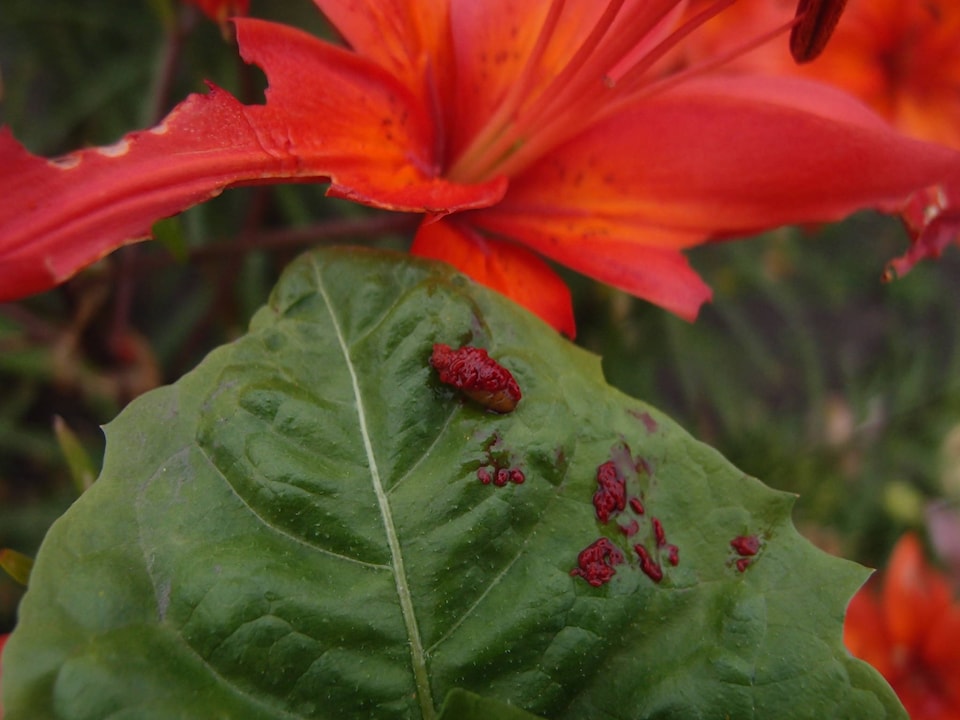Lily growers in central and southern Alberta know the destruction lily beetles can cause.
But now, with research from Olds College, there’s a way to get rid of the pests, and at the same time, restore a natural balance to the ecosystem.
Ken Fry, an instructor at Olds College’s school of life sciences and horticulture, said a non-native parasitic wasp called tetrastichus setifer preys on the lily beetle.
The lilies that have been growing on the college’s campus are beetle free, said Fry, a pest management and horticulture instructor.
Fry explained the parasitic wasp, originally from Asia – just like the beetle – is a natural enemy that evolved with the lily beetle. The wasp populates most of Europe today, just like the lily beetle.
“It’s done a good job here on campus, but that doesn’t mean all the beetles are gone, it just means there is fewer, and so the wasp has to search further and farther away.”
The non-native lily beetle has spread across Europe and North America. It was first sighted in Canada in 1943 in the Montreal area – and it’s thought to have come to Canada through the lily trade.
It then spread to other provinces, including Ontario, Manitoba, New Brunswick and Alberta.
The bright-red-coloured beetle was first seen in the province in Airdrie in 2004. From there, it started to spread to other parts of Alberta.
Fry said today, there’s evidence of the beetle in the Edmonton area, down south in Calgary, Okotoks and Drumheller, and in central Alberta communities, including Red Deer and Lacombe.
In 2010, Olds College started the project, partially funded by the Alberta Regional Lily Society, looking into lily beetles.
The college put a call out to gardeners, groups and lily growers to send photos and information to start collecting a database to track where the beetle is spreading. According to Fry, the beetle does not exist in northern Alberta, near Grande Prairie and Fort McMurray.
The beetle feeds mostly on lilies and fritillaria – a relative of lilies.
“They eat all the leaves, the flower buds, before they open, so that takes away the plant’s capacity to photosynthesis, so it can’t produce pollen, flowers, it can’t reproduce – it strips it bare,” Fry said.
As part of the project, the college wanted to see if the parasitic wasp could be released in Alberta.
“Beginning in 2014, we started doing releases here at Olds College campus and sampling beetles every year to see if the wasp was able to survive winter successfully,” he said.
“And it’s to the point now, we’re really hard pressed to find any beetles on Olds College campus. The numbers have dropped so much and we’re getting reports from town folks their lilies are fine now. We’ve subsequently done releases in Airdrie and Calgary (as well).”
The wasp destroys the beetle by laying its eggs in the larval stage of the beetle.
“The wasp doesn’t kill the beetle right away. It sits inside the beetle, waits for it to be fully grown and feed itself, so it’s a big, fat, yummy full meal,” said Fry.
“The beetle drops down into the soil, spins that silken cocoon to pupate, and then and only then, the wasp will begin to feed. The beetle is full of food. It’s produced a safe place to spend the winter and that’s when the wasp begins to feed.
“Then come spring, it pupates inside that dead beetle and emerges to go looking for new beetles.
“The wasp is specific to that host, and that host only, and it won’t lay eggs in anything else. So there’s no risk to any beetles, lady beetles, honey bees, bumble bees, butterflies, no risk to animals in general.”
mamta.lulla@reddeeradvocate.com
Like us on Facebook and follow us on Twitter
